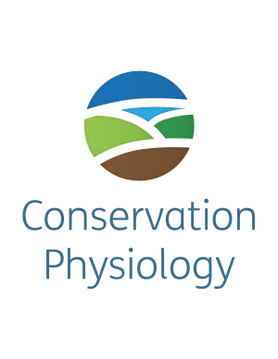Conservation Physiology
Conservation Physiology is an interdisciplinary scientific field that focuses on understanding and applying physiological principles to conservation biology. It aims to address the challenges faced by wildlife and ecosystems due to human activities and environmental changes. By studying the physiological responses of organisms to their environment, conservation physiology seeks to develop strategies for the preservation of biodiversity, the restoration of endangered species, and the maintenance of ecosystem health.
Overview[edit | edit source]
Conservation physiology combines principles from physiology, ecology, and conservation biology to investigate how environmental stressors (such as climate change, habitat destruction, and pollution) affect the physiological processes of organisms. This field emphasizes the importance of physiological flexibility and adaptation in the survival and reproduction of species under changing environmental conditions. Through its multidisciplinary approach, conservation physiology provides insights into the mechanisms that underlie species resilience and vulnerability, offering practical solutions for conservation management and policy.
Applications[edit | edit source]
The applications of conservation physiology are diverse and include the assessment of animal health and stress levels, the evaluation of habitat quality, and the development of conservation strategies that minimize human impact on wildlife. Techniques such as telemetry, remote sensing, and physiological biomarkers are commonly used to monitor the health and activity of animals in their natural habitats. Conservation physiology also plays a crucial role in the management of captive breeding programs, the design of protected areas, and the restoration of degraded ecosystems.
Climate Change[edit | edit source]
One of the critical areas where conservation physiology contributes significantly is in understanding the impacts of climate change on biodiversity. By studying the physiological responses of species to temperature changes, drought, and extreme weather events, researchers can predict which species are most at risk and identify conservation priorities. Conservation physiology also offers insights into the potential for acclimatization and adaptation, informing strategies to enhance the resilience of ecosystems to climate change.
Pollution[edit | edit source]
Another important application of conservation physiology is in assessing the effects of pollution on wildlife. By examining the physiological impacts of contaminants such as heavy metals, pesticides, and plastics, conservation physiologists can identify the mechanisms of toxicity and develop measures to mitigate these effects. This research is crucial for the establishment of pollution standards and the conservation of species in polluted environments.
Challenges and Future Directions[edit | edit source]
Despite its contributions, conservation physiology faces several challenges, including the need for interdisciplinary collaboration, the complexity of scaling physiological responses from individuals to populations and ecosystems, and the difficulty of translating research findings into effective conservation actions. Future directions for the field include the integration of new technologies for monitoring physiological states, the application of genetic and epigenetic information to understand adaptive capacity, and the development of predictive models to guide conservation decision-making.
Conclusion[edit | edit source]
Conservation physiology is a vital field that bridges the gap between physiological research and conservation practice. By focusing on the physiological basis of species' responses to environmental changes, it provides essential insights for the development of effective conservation strategies. As human pressures on the environment continue to escalate, the role of conservation physiology in safeguarding biodiversity and ecosystem health will become increasingly important.
Search WikiMD
Ad.Tired of being Overweight? Try W8MD's physician weight loss program.
Semaglutide (Ozempic / Wegovy and Tirzepatide (Mounjaro / Zepbound) available.
Advertise on WikiMD
|
WikiMD's Wellness Encyclopedia |
| Let Food Be Thy Medicine Medicine Thy Food - Hippocrates |
Translate this page: - East Asian
中文,
日本,
한국어,
South Asian
हिन्दी,
தமிழ்,
తెలుగు,
Urdu,
ಕನ್ನಡ,
Southeast Asian
Indonesian,
Vietnamese,
Thai,
မြန်မာဘာသာ,
বাংলা
European
español,
Deutsch,
français,
Greek,
português do Brasil,
polski,
română,
русский,
Nederlands,
norsk,
svenska,
suomi,
Italian
Middle Eastern & African
عربى,
Turkish,
Persian,
Hebrew,
Afrikaans,
isiZulu,
Kiswahili,
Other
Bulgarian,
Hungarian,
Czech,
Swedish,
മലയാളം,
मराठी,
ਪੰਜਾਬੀ,
ગુજરાતી,
Portuguese,
Ukrainian
Medical Disclaimer: WikiMD is not a substitute for professional medical advice. The information on WikiMD is provided as an information resource only, may be incorrect, outdated or misleading, and is not to be used or relied on for any diagnostic or treatment purposes. Please consult your health care provider before making any healthcare decisions or for guidance about a specific medical condition. WikiMD expressly disclaims responsibility, and shall have no liability, for any damages, loss, injury, or liability whatsoever suffered as a result of your reliance on the information contained in this site. By visiting this site you agree to the foregoing terms and conditions, which may from time to time be changed or supplemented by WikiMD. If you do not agree to the foregoing terms and conditions, you should not enter or use this site. See full disclaimer.
Credits:Most images are courtesy of Wikimedia commons, and templates Wikipedia, licensed under CC BY SA or similar.
Contributors: Prab R. Tumpati, MD

